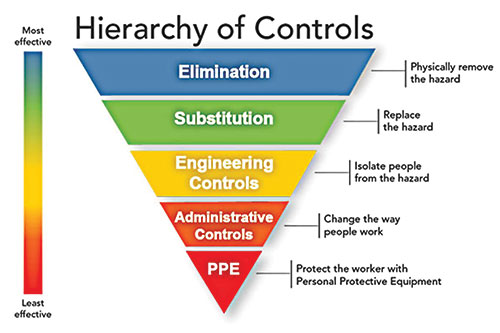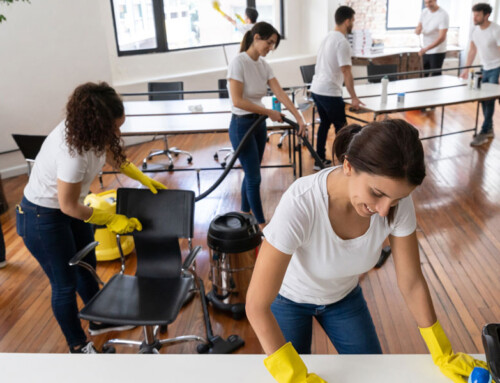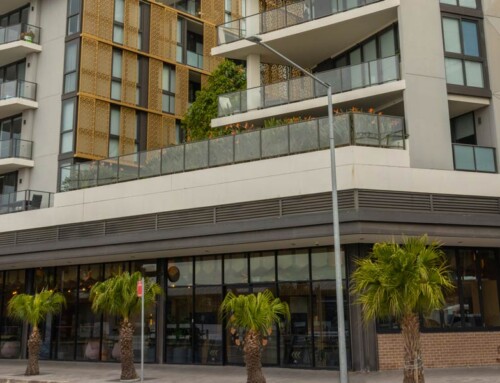Mapping Indoor Workplaces
The COVID-19 pandemic caught us off guard as it suddenly—and enduringly—upended indoor workplaces. For businesses that can support their employees who are working from home, Zoom and Microsoft Team video calls have become the new normal. But bringing employees back into the indoor workplace has created significant challenges that employers need to prepare for.
The need for safe indoor workspaces
Indoor spaces pose a greater risk of spreading COVID-19 than the outdoors. Hospitals, airports, nursing homes, convention centers, stadiums, hotels, schools, manufacturing facilities, retail businesses, government buildings, and other organizations that either could not let their employees work from home or brought their employees back early on, need effective ways to implement safety measures fast. Even organizations offering an ongoing hybrid model, where employees work from the office sometimes and home the rest of the time, need to visualize hazards and risks in order to safely use their indoor workspace.
As organizations in cities, counties, states, and countries around the world enter various stages of recovery, the Global Biorisk Advisory Council® (GBAC), a division of ISSA, utilizes the 20 Element GBAC® STAR Facility Accreditation program to help organizations analyze what it would take to bring their employees back to work. The priority is safety, and the focus is on creating a safe communal indoor working environment that employees feel comfortable returning to. This includes physical distancing requirements by reducing indoor capacity, evaluating air quality, and cleaning and disinfecting high touched surfaces.
Diarrheal diseases, respiratory diseases, and soft tissue infections have always illustrated the need for better health safety in the workplace. But the SARS-CoV-2 virus that caused the COVID-19 pandemic has greatly accelerated having a workplace operations system in place that facilitates enhancing indoor space safety. This includes strategic placement of hand sanitizers and the ability to respond to overcrowding and cleaning and disinfecting surfaces that are touched often.
Mapping indoor workspaces
By mapping indoor workspace and using Element 7: Risk Assessment and Risk Mitigation Strategies of the GBAC® STAR program, facilities have made adjustments to how indoor spaces are managed across a range of sectors, increased employee awareness of the surroundings, and provided a much clearer common operating picture to those who manage facilities.
The GBAC® STAR program defines risk as a function of both the likelihood of something happening and consequences of that occurrence, i.e, “How bad can it get?” GBAC® STAR facilities use floor plans and indoor maps to identify hazards. They also use risk assessments to decide which are acceptable or unacceptable risks and what needs to be done to mitigate the risk.
GBAC® STAR accredited facilities are using various tools for mapping indoor locations, such as paper-based floor plans, indoor GIS software, and smartphone apps that provide actionable procedures to mitigate the risks of transmission of any infectious disease-causing agents such as viruses and bacteria. Facilities use their indoor maps with Element 6: Program Controls and Monitoring to put in place documented procedures for monitoring the effectiveness of applied protocols and procedures. Many facilities are utilizing technologies such as dashboards, Quick Response (QR) codes, Wi-Fi networks, radio-frequency identification (RFID) to monitor use of equipment, movement of people, and verify that cleaning and disinfection activities are completed.
GBAC® STAR accredited facilities use technology to create a new level of knowledge and understanding when it comes to facility operations. Operations managers are mapping indoor spaces to better understand the hazards and the risks and to implement the most appropriate equipment, personnel, and cleaning and disinfectant products for their work environment. They often must implement multiple complementary controls to prevent the spread of the SARS-CoV-2 virus.
Maps of indoor spaces, combined with photos and video, help determine where there are physical distancing conflicts, such as in staff breakrooms and bathrooms, ensuring workspaces are compliant with health and safety regulations and maximum occupancy requirements. Mapping high touch areas that require cleaning and disinfecting, locations of hand sanitizers, people movement flow, hard floors and carpeted areas, etc., provides an easy-to-understand risk assessment tool using the traffic light colors (red, yellow, green) that helps make working in the building safer.
Airports, convention centers, stadiums, and hotels have implemented systems using QR codes and satisfaction feedback apps to report facility issues—for example, areas that need cleaning. This information is received immediately on a map to show the location in the building and viewed on a dashboard or mobile app by staff. Some systems allow the uploading of photos. When this information is submitted, cleaning staff receive a notification telling them precisely what and where the problem is. Then they can use the indoor map to navigate directly to the area of concern.
As part of Element 16: Facility infection disease prevention practices, mapping indoor spaces helps operation managers maximize the use and effectiveness of available resources such as equipment and cleaning and disinfection products, including task overflow to additional workgroups at peak demand of cleaning services. It also helps implement recommendations from both the U.S. Centers for Disease Control and Prevention (CDC) and the U.S. Department of Labor Occupational Safety and Health Administration (OSHA) that employers’ COVID-19 response plans should utilize the hierarchy of controls, which generally labels and prioritizes controls in the following order, from most to least effective: elimination, substitution, engineering controls, administrative controls and safe work practices, and personal protective equipment (PPE).
Engineering controls require a physical change to the workplace to isolate workers from a hazard. Examples of engineering controls that employers may find useful for protecting workers from SARS-CoV-2 include:
- Location of hand sanitizer and disinfectant wipe stations
- Installing plexiglass and other physical barriers
- Adjusting ventilation systems, consulting a qualified technician if necessary
- Location of no-touch technologies, such as hands-free entry/exit and waste disposal.
- Administrative controls and safe work practices change policies and procedures for how workers perform job duties to ensure work activities are conducted safely. Examples of administrative controls that employers may find useful for protecting workers from SARS-CoV-2 include:
- Location of signs in languages that workers understand
- Limiting the number of people in a room
- Providing training
- Increasing the frequency of cleaning and disinfection.
New tools, including indoor mapping, are being used to accommodate the rising demand for cleaning, infection control, risk assessment, and gatekeeping of peoples’ movements, which is critical in managing the risks for COVID-19 and other infectious diseases. In addition, GBAC® STAR accredited facilities are using data analytics, which will draw insights on resource utilization by using consumption data of cleaning products and the manufacturers dwell or wet contact time and how to increase capacity and reduce risk.
Using data focusing on resource utilization helps management make key decisions across different indoor spaces and at various stages of the pandemic. Not only does this reduce costs, but it can also increase employee confidence and happiness, help organizations differentiate themselves from the competition, and better prepare businesses for other potential challenges.
Finding the quickest, most efficient, and—in times of a pandemic—the safest route is not always an easy job. Indoor mapping and mapping technology that enhances operations and improves efficiency of teams are being deployed to great effect. Janitorial teams that, in the past, traveled all through a building, are now being managed by location, allowing a system of ‘right person, right place, right time.’ This has had a dramatic effect on efficiency and productivity and creates a safer working environment.
The COVID-19 pandemic has revealed that mapping indoor spaces can enhance facility safety. GBAC® STAR facilities have used indoor maps to increase employees’ awareness of their surroundings and provide a much clearer common operating picture to those who manage facilities. Isn’t that something we could all use when things seem so uncertain?
References:
- US CDC—Guidance for Businesses and Employers Responding to Coronavirus Disease 2019 (COVID-19) accessed on Feb 8, 2021, https://www.cdc.gov/coronavirus/2019-ncov/community/
guidance-business-response.html - US CDC—Cleaning and Disinfecting Your Facility accessed on Feb 8, 2021, https://www.cdc.gov/coronavirus/2019-ncov/community/disinfecting-building-facility.html
- OSHA COVID-19 Controls and Prevention accessed on Feb 8, 2021, https://www.osha.gov/coronavirus/control-prevention
- OSHA Recommended Practices for Safety and Health Programs—Hazard Prevention and Control accessed on Feb 8, 2021, https://www.osha.gov/shpguidelines/hazard-
prevention.html



















